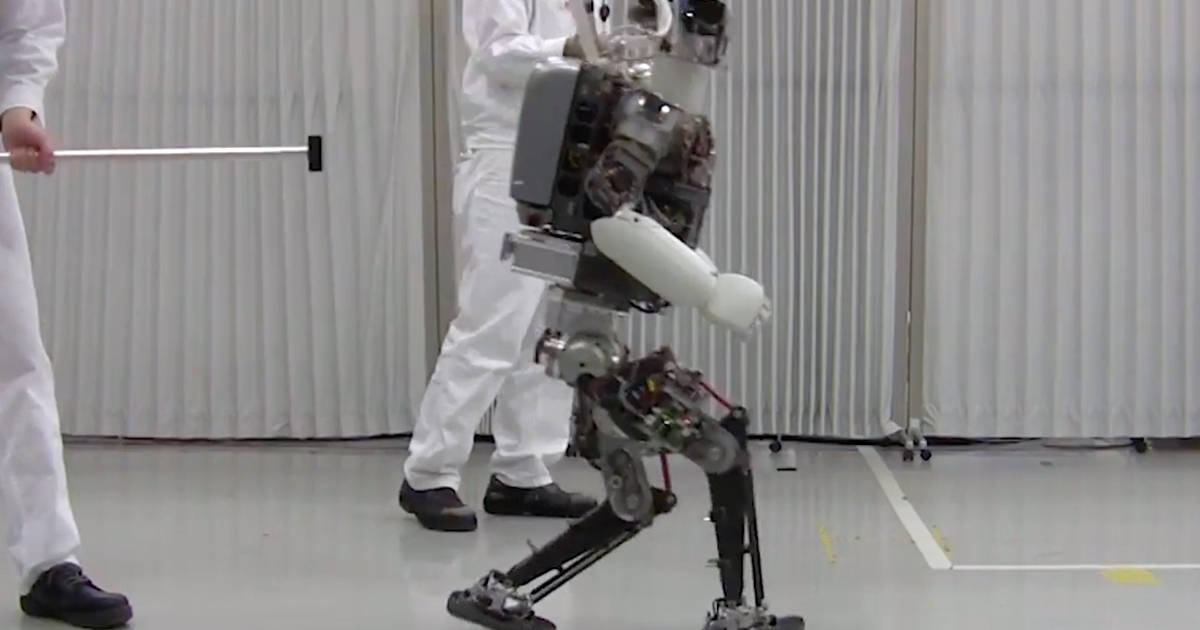Well, I don’t think I’ve ever seen an Asimo with exposed leg hardware before, so that’s cool.
What you’re watching in the video is Asimo recovering from two shoves: one in the forward direction, and one in the lateral direction. Shove recovery for humanoids in general (two-legged humans included) is accomplished by keeping your center of gravity within the area that your feet are able to support. To recover from a forward or backward shove, most people (and humanoid robots) take a step or a series of steps proportional to how hard the shove was—a stronger shove requires a bigger step or more smaller steps to keep torso mostly above leg and foot. However, if the shove is too strong, the necessary step length becomes larger than you (or the robot) can manage, or it simply happens too fast to react. For robots, this usually means a face-plant.
Honda’s new strategy with Asimo is to take longer and faster steps to recover from bigger shoves by transitioning to a running gait, which is exactly what humans do if we need to. Asimo uses a new kind of motion planner that can dynamically select different gaits in order to choose the most effective way to keep from falling over. The hopping comes in when Asimo is shoved laterally in the direction while it’s walking—in this case, the robot can’t move the leg that it’s using to support itself, and that leg is also blocking the other leg (the swing leg) from being used, which requires the hopping motion.
The video shows everything working flawlessly, as videos attached to papers usually do, but the researchers are perfectly honest about how well this actually works, noting that “the robot fell over many times in the same kind of experiments.” In particular, they need to speed up gait planning, and also improve the robot’s hopping motion to make things robust. Just like with humans, though, there’s a finite magnitude of shove that we can physically handle without falling over, and our last-ditch tactic to prevent ground contact is to catch ourselves with our arms. The Honda researchers would like to implement a similar behavior in their humanoids by transitioning from bipedal to quadrupedal locomotion:
Additionally, one of the ideas is adding the transition to quadrupedal to the candidate of the locomotion mode selection. We consider that the motion to make the transition to quadrupedal is the ultimate motion to compensate for large disturbances, because a human also touches the ground if extremely disturbed.
We saw this bipedal to quadrupedal transition with Honda’s E2-DR disaster robot, so it seems likely that Honda may already have integrated Asimo’s shove recovery into their other humanoids as well. Even if we don’t see anything new from Asimo going forward, we’ll be able to look at behaviors like these in Honda’s future robots, and remember where they came from. Asimo, you had a good run.
